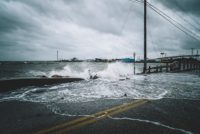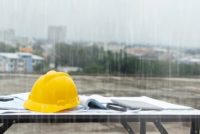No one wants it to happen, but an emergency, natural or manmade, can strike at anytime, 24/7. What’s more, it need not be a major, nationally-televised incident, such as a hurricane, earthquake, or act of political terror. An event as common as a local building fire can present just as large a challenge to you. These resources will help you create a plan for handling such crises, whatever their scope, and to carry it out in a way that best protects your employees and your company.
The American Heart Association (AHA) issued interim cardiopulmonary resuscitation (CPR) guidelines that apply during the COVID-19 pandemic. The AHA recommended bystanders and lay rescuers administer “hands only” CPR without mouth-to-mouth ventilation to limit exposures to the SARS-CoV-2 virus that causes COVID-19.
Healthcare facilities and public health officials now must inform emergency responders when they have been exposed to the novel coronavirus that causes COVID-19. On March 27, the National Institute for Occupational Safety and Health (NIOSH) updated its list of potentially life-threatening infectious diseases to which emergency responders may be exposed (85 Federal Register 17335).
It’s impossible to avoid at this point, the coronavirus (COVID-19) is on everyone’s mind. Sports leagues around the world have shut down, companies are going fully remote, and colleges have switched to being exclusively online.
The Occupational Safety and Health Administration (OSHA) has issued guidance on preparing workplaces for a COVID-19 outbreak. The guide explains how COVID-19 could affect workplaces and steps employers can take to reduce workers’ risk of exposure.
Workplace violence prevention should be a priority for every environment, health, and safety professional. Although you may feel certain it could never happen at your organization, planning for the possibility of a violent incident is essential for ensuring that your employees stay as safe as possible. On our latest podcast episode, we’re talking to a […]
While workplace violence can happen in any industry or occupation, healthcare and social services workers face a high risk of job-related violence. Workplace assaults ranged from 23,540 and 25,630 annually over a 3-year period, and 70% to 74% of those occurred in healthcare and social services settings.
With hurricane season here to stay until the end of November, it’s important to think about how prepared (or unprepared) your workplace is for a disaster. Tornadoes. Fires. Floods. They’re all happening much more frequently than they did decades ago, and they’re dangerous and expensive.
Many of us embark on some type of journey on the road daily, opening the door to unforeseen circumstances that could potentially change our lives.
An alert pops up on your computer or phone: “Area Flood Warning.” The National Weather Service has predicted heavy, sustained rainfall for your area. Are you ready?
As safety, health, and risk professionals, we pay close attention to newsworthy workplace disasters. Based on the scale and severity of these incidents, perhaps we assume they could not occur in our own organizations—after all, this is what we work to prevent. But the fact is, disasters can happen anywhere.










